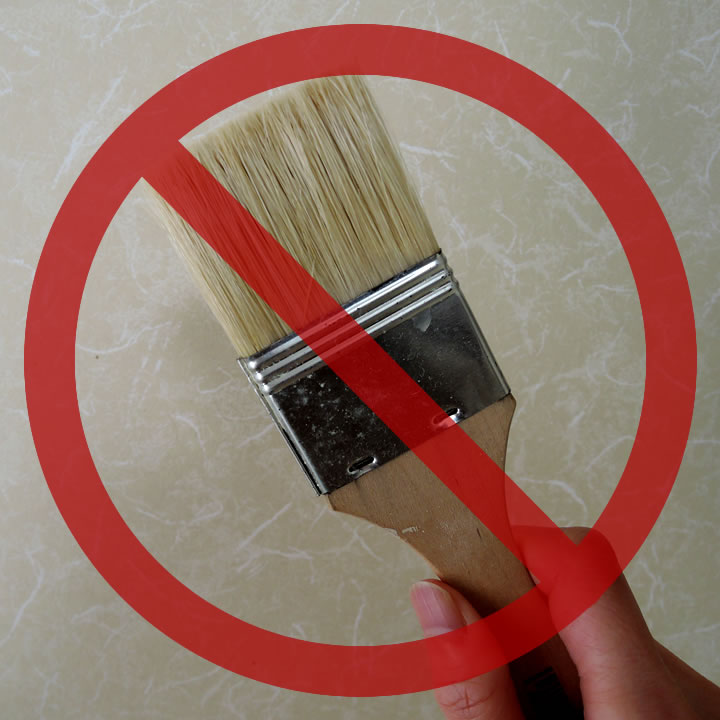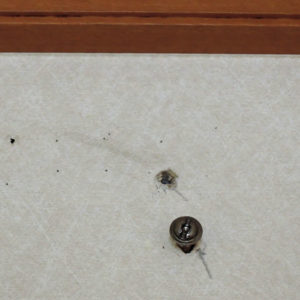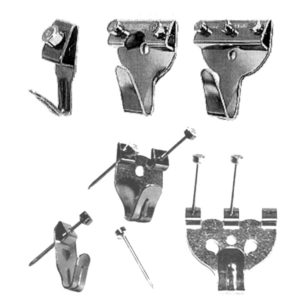DIY room decorating and customization have been popular in Japan, but there are things not allowed to do for rental housing/apartments, with consideration of “Genjo-kaifuku”.
What’s Genjo-kaifuku? “Restoration”
Genjo-kaifuku 原状回復 or restoration of rental housing/apartments is to have rooms restored to its original state when the tenant moves out. The repair is required for damages that exclude natural tear and wear, those of which due to ordinary use in daily life and aging, such as color fading from sunlight. The fee is usually charged for the restoration.
The restoration fee is usually required for damages caused by the tenant’s intent or accident which include;
- Room condition kept filthy without daily cleaning, especially its of kitchen and bathroom
- Stains and mold grew from lack of ventilation
- Dog smells, cat scratching in an extensive area (In case of pet-friendly rental apartments)
- Yellow wall caused by smoking
- Scratches accidentally made while moving in, e.g. carrying in furniture into rooms
- Decorating and customization of rooms
Removal of left-behind items is considered as restoration
When moving out of a rental housing/apartment, the furnishings originally equipped in rooms are supposed to be left there as a matter of course. On the other hand, all of the tenant’s personal belongings, for example, beds and carpets, must be carried away when leaving.
If the landlord has to dispose of left-behind items, the fee is charged to the tenant as a part of the restoration fee. In some cases, it is allowed to leave light fixtures, curtains or those small items, the tenant should ask the landlord whether leave the items without any extra cost or not when moving out.
Restoration fees
The fee required for restoration is dependent on the degree of damage to be recovered. The more repair work is necessary, the cost increases. To estimate how much repair is required, an inspection is done on the day of moving out, and the fee is calculated accordingly. The inspection is called Tachiai 立会い which is done together with the landlord and the tenant at the site.
The cost is also dependent on the durable years
For example, the legal durable years for wallpapers and carpets are 6 years in Japan. If the tenant moves out of an apartment after having lived for 6 years or more, the restoration fee can be almost zero even for damages such as discoloration by smoking. However, if the tenant leaves the apartment after having lived less than 6 years, the fee is charged and more expensive as it is still within the depreciation period.
Tips on how you can avoid a high cost of restoration
Here you find some tips on avoiding trouble on restoration, mostly caused by damages on walls.
No painting on walls allowed
The wall of a rental apartment usually cannot be painted. If the tenant paints the wall, the restoration fee is charged and it will be expensive because of the difficulty in removal. In principle, the tenant is not allowed to paint the wall even the repair costs a lot or otherwise.
If you want to paint walls in your rental housing/apartment, apply a base paper (Penki Shitaji Kabegami ペンキ下地壁紙) on the wall then paint it. Or using peel-able wallpaper can be a better alternative. In any of these ways, you are supposed to have permission from the landlord beforehand. Also, you should consider the restoration before you get started with a DIY project.
Do not wipe with a damp cloth to clean the “Sunakabe” wall
The Japanese-style room with tatami mats usually has Sunakabe, the wall made of s Sand paint/paper. The sunakabe wall has a grainy surface on which you cannot apply other wallpapers. Applying sealer on the wall instead of wallpaper will disable the complete recovery.
If you got a stain on the sunakabe wall and want to remove it, do not use detergent and not scrub/wipe with a damp cloth. It may result that the wet part gets discolored and the stain will get bigger. Wiping gently with a dry cloth may be a little help, but it is difficult to remove it completely. The snakabe wall should be kept dry and away from any dirt and grime, and that is how you can prevent such trouble happens.
Do not wax the floor with a flooring material
The floor with a flooring material usually has a wax coating. The layered wax must completely be removed before newly waxing; otherwise, the wax will come off partially little by little, which spoils the floor appearance. Also, the floor may get scratches while stripping the old wax, and therefore, the waxing disables restoration and the repair fee is required.
Do not drill holes in the wall!
For rental housing/apartment, the tenant is not allowed to drill holes in any walls inside and outside, especially never drill in the wall of the bathroom.
Repair fee for the drilled hole is also charged.
If you find holes in the wall when you move in an apartment, you should let the landlord have known of it so that you can claim it is not your fault. Taking a photo of the hole can also be of help.
To hang the pictures or paintings, use the pin hooks.
As for pushing pins in walls to decorate something, it is suggested you ask the landlord if it is allowed or not. Even if it is allowed, try not to make too many pinholes in the wall as a repair fee may be charged. To decorate walls, it should be better to use peelable adhesive tape, called Hatte Hagaseru Tape 貼ってはがせるテープ in Japanese. The Japanese word “Hagaseru” means “peelable”, and is a useful word for DIY lovers.






